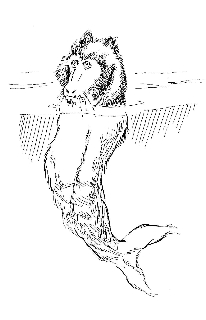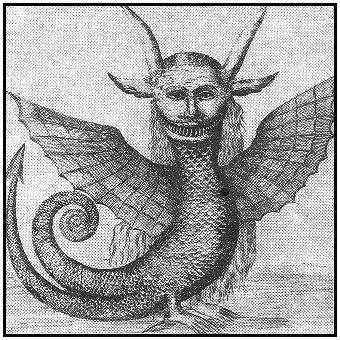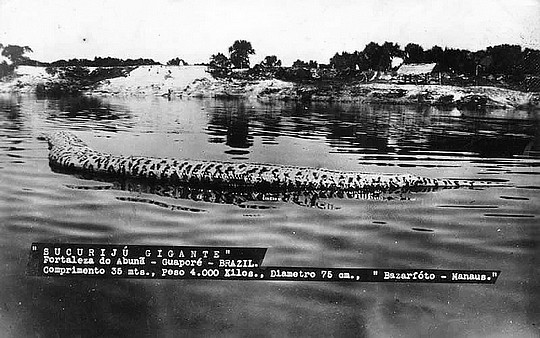Aleutian Islands--possibly the Shuinagin Islands
North Atlantic, Russia/Alaska
ADD PICTURE p. 98
In 1741, Commander Vitus Bering led a sailing expedition in the employ of Czar Peter the Great. His zoologist, the German Georg Wilhelm Steller, is nowadays most well-known for his discovery on that voyage of the now-extinct Steller's sea cow--at least we think it's extinct. Steller found and described many new animals on this voyage, all of which have been identified--except for one.
During this time we were near land or surrounded by it we saw large numbers of hair seals, sea otters, fur seals, sea lions, and porpoises…On August 10 [1741] we saw a very unusual and unknown sea animal, of which I am going to give a brief account since I observed it for two whole hours. It was about two Russian ells [six feet] in length; the head was like a dog`s, with pointed erect ears. From the upper and lower lips on both sides whiskers hung down which made it look like a Chinaman. The eyes were large; the body was longish round and thick, tapering gradually towards the tail. The skin seemed thickly covered with hair, of a grey colour on the back, but reddish white on the belly; in the water, however, the whole animal appeared entirely reddish and cow-coloured. The tail was divided into two fins, of which the upper, as in the case of sharks, was twice as large as the lower.
 |
| Harry Trumbore's depiction of Steller's sea monkey. |
According to Richard Ellis in Monsters of the Sea, "the animal cavorted around Steller's boat for hours, playing with strands of kelp, and finally, Steller took a shot at it ('in order to get possession of it for a more accurate description'), but he missed. According to The Field Guide to Bigfoot and Other Mystery Primates, by Harry Trum, the sighting took place off the Shuinagin Islands, Alaska.
In Searching for Hidden Animals, Roy Mackal discounts the suggestion that Steller confused the creature with a sea otter or a seal and writes, 'The simplest explanation is that the 'sea-monkey' actually existed, and that Steller saw it for the first and last time before it became extinct.'" Ellis points out that the sea mink of the Atlantic off Maine and New Brunswick shares characteristics with this mysterious animal, and even has relatives off Alaska--but none that truly match Steller's description.
Steller went on to say that the creature "corresponds in all respects to Gesner's Simia marina Danica," the "Danish Sea-ape." Conrad Gesner is a pretty reliable source, being the author of Historia Animalium (1551-58)--considered the basis of modern zoological classification.
Citing a source listed only as "M.Clark op cit p.12," the Still on the Track blog gives the following quoted text:
No record of any other sighting of this animal has been found,and so scientists have generally agreed that it must have become extinct at around the same time as the sea cow. That was until 1965...On a clear afternoon in June, [when Brigadier Smeeton, his wife and daughter and Henry Combe - R] were sailing about four miles off the northern coast of Atka, in the central Aleutians, bound for Deep Cove,when they saw a strange animal which they couldn't identify.
Possible explanations
Famed cryptozoologist Loren Coleman writes that
According to biographer Dean Littlepage in his Steller’s Island: Adventures of a Pioneer Naturalist in Alaska (The Mountaineers Books, 2006), the most likely explanation for the sea ape is a young Northern Fur Seal. Their forelimbs are set back far enough on their torso that they might have been obscured below the waterline, and the “shark-like” tail might have been the animal’s hind flippers. Steller was already familiar with fur seals, but Littlepage speculates that poor lighting during the lengthiest encounter with a probable juvenile could account for the misidentification.
Coleman notes int eh same entry that some have said the creature could be a misidentified Hawaiian monk sealIt's difficult to dismiss Steller's account of the sea-monkey, seeing that he discovered and described so many other creatures which we know to be real--this one is the only exception.







